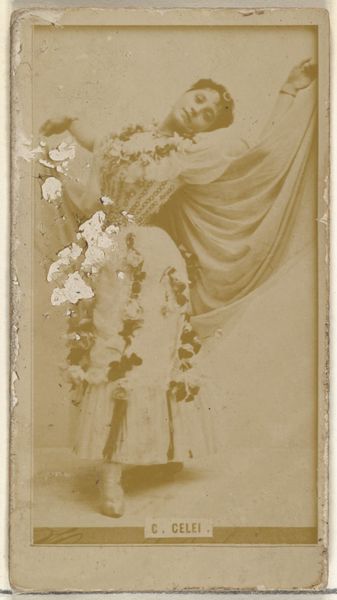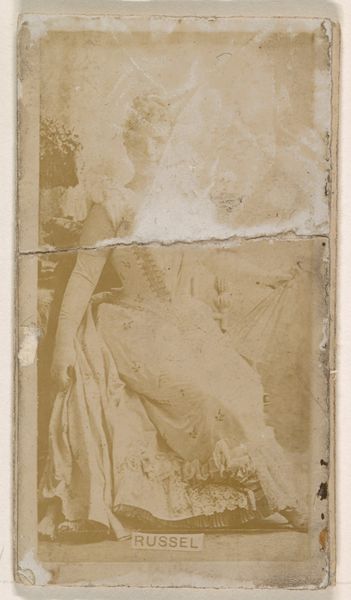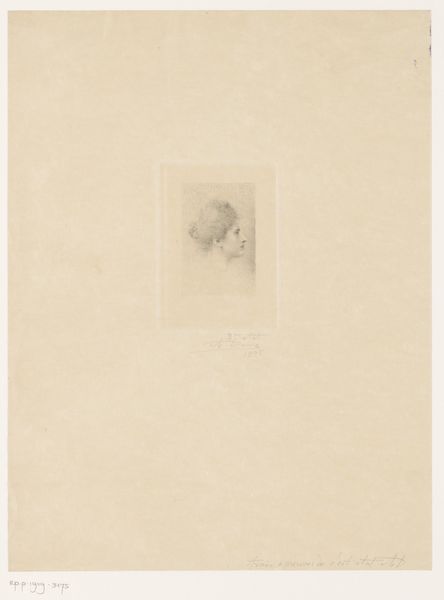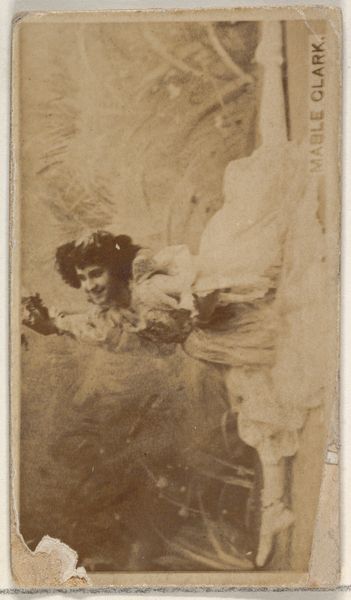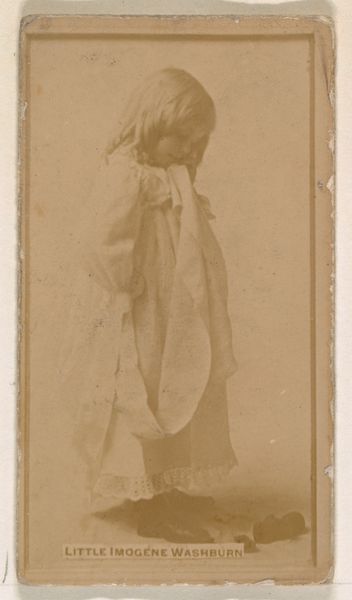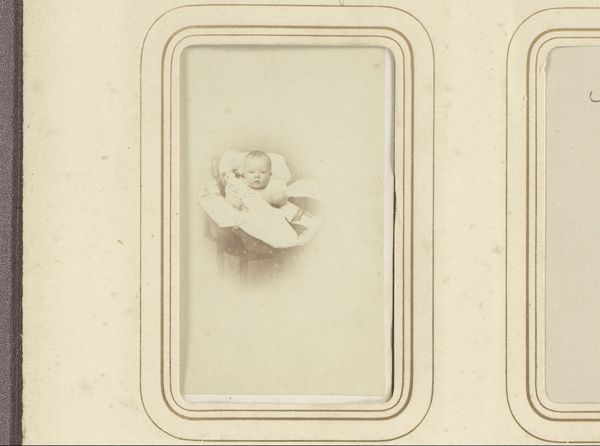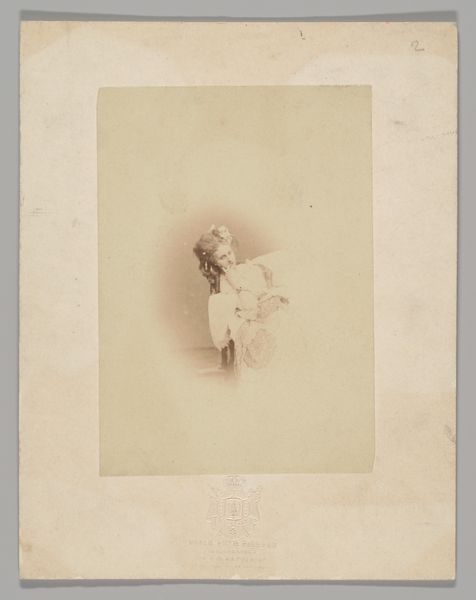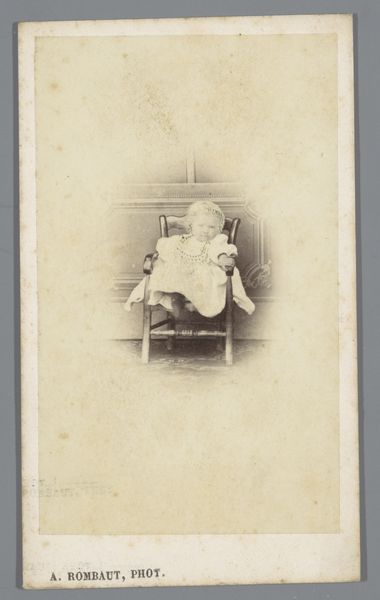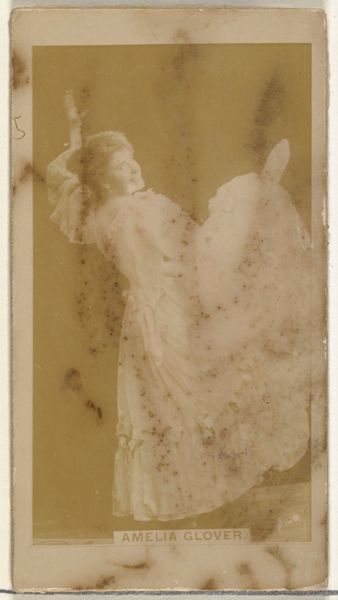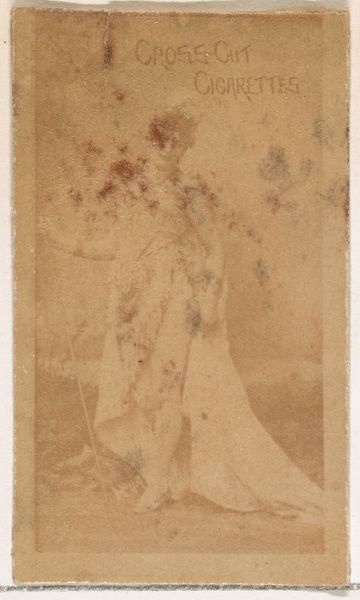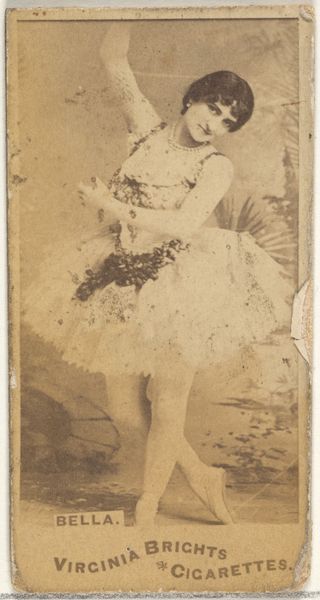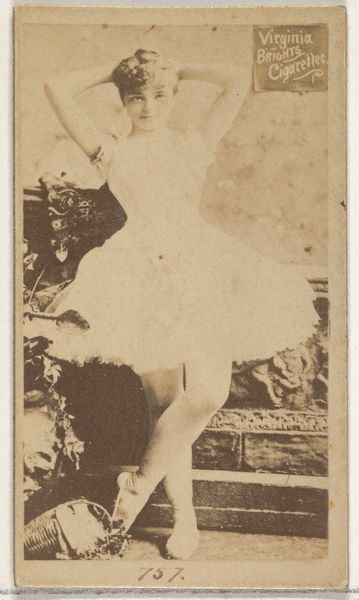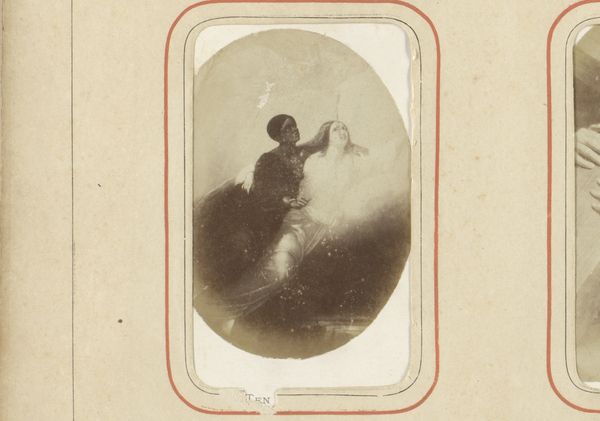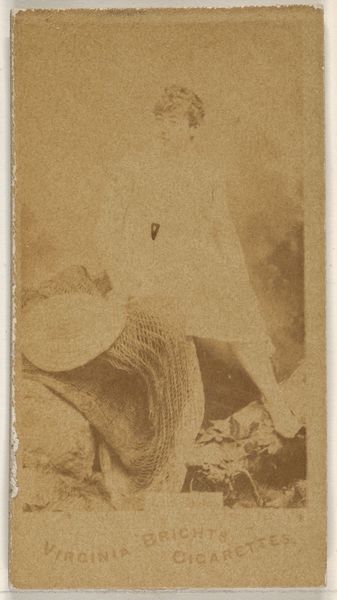
Harriet Warner Walker, less than 24 hr. old Possibly 1870 - 1890
0:00
0:00
print, photography, gelatin-silver-print, albumen-print
#
portrait
# print
#
photography
#
gelatin-silver-print
#
albumen-print
Dimensions: 14.5 × 9.3 cm
Copyright: Public Domain
Editor: This is "Harriet Warner Walker, less than 24 hr. old," a photograph likely taken between 1870 and 1890 by J. J. Kanberg. It looks like a gelatin-silver or albumen print. The fragility of life seems very present here, even palpable. What strikes you most about this piece? Curator: What resonates for me is how this image intersects with the history of women and representation. Consider the context: in the late 19th century, infant mortality was significantly higher, especially for marginalized communities. The act of photographing a child so young takes on a new meaning; it becomes a document, a form of remembrance, a testament to a life, however brief. Editor: That’s a powerful way to frame it. It’s easy to forget the social realities behind these old portraits. Curator: Exactly. And notice the formal elements – the soft focus, the delicate pose, the baby’s pristine white dress. What ideology is being presented here? How might gender, class, and race inform the interpretation? Editor: Perhaps an idealized version of motherhood? A sentimental depiction aimed at emphasizing innocence and purity? Curator: Precisely. Consider the politics of sentimentality, especially during an era grappling with profound social changes, like industrialization and the fight for suffrage. This seemingly innocent image can also reveal broader narratives about power and control. It makes you question what visual legacies have been omitted. Editor: It really reframes my perception of the image – it is much more than a sentimental image. Thinking about it in a broader historical context, makes me realize how it’s also a photograph of a certain place, and certain values. Curator: Yes, by exploring beyond just aesthetic impressions and instead questioning these broader narratives, we unlock a more comprehensive understanding of its significance, and ultimately see it as a reflection of its time, values, and biases.
Comments
No comments
Be the first to comment and join the conversation on the ultimate creative platform.
